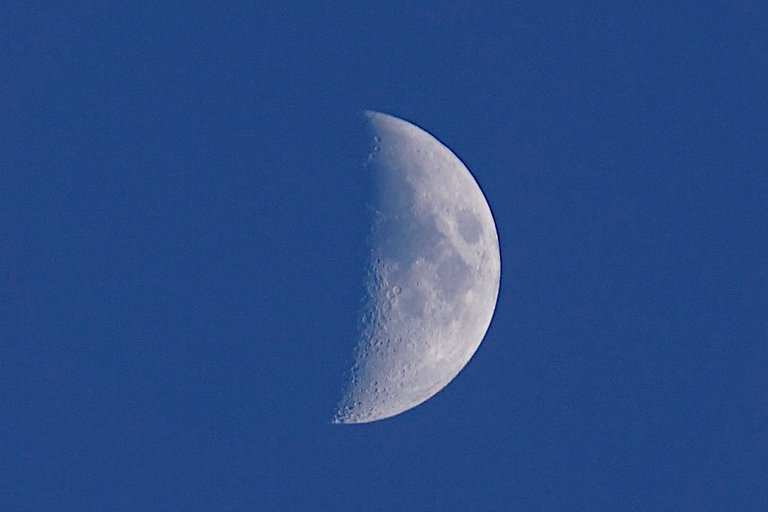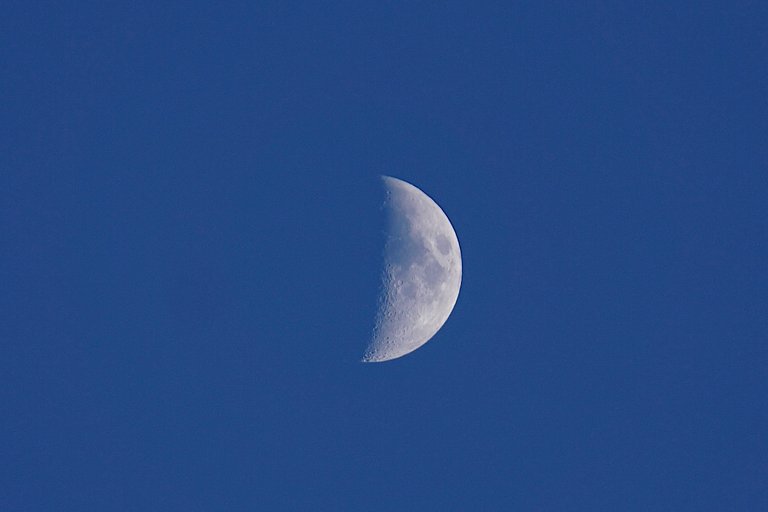Hey dear community, first of all I would like to welcome you all to my new post and hope you had a day that was full of positive experiences! In this post, I would like to talk a little about the moon and hope you can expand your knowledge.
Here are some pictures of the waxing moon that I took during daylight and I would like to talk about the meaning of this celestial body in antiquity and at the beginning, the moon was associated a lot with mythological events and over time the topic changed and the topic began to be explored more and developed into a science. In pretty much every culture there were some moon gods and everywhere you can see parallels and mostly the moon was associated with female deities and was an important symbol of fertility and in ancient Rome it was, for example, the goddess Luna who was associated with the moon, but there are also some cultures in which the moon was linked to male aspects and sun and moon were often associated with each other and were considered siblings or couples. The female cycle was also closely linked to the moon and some philosophers of antiquity set themselves the task of observing the moon and the different phases exactly and realized that it was associated with some phenomena and in ancient Greece there was a suspicion that the seas of the earth would be reflected in the moon. Many tried to research these phenomena very specifically and well-known philosophers were Aristotle, Plato, Plutarch, Thales of Miletus and more and Aristotle had the general opinion that the moon should consist of four elements just like the earth and some were the assumption that the moon was transparent and the lunar eclipse was considered as proof to refute this thesis. In the past, opinions differed greatly even when it came to the movement of different celestial bodies and according to the world image at the time, the earth was in the center and other celestial bodies such as the moon or the sun would move around the earth and for Aristotle it was clear that this could be explained by the teaching of the elements and it was logical that the earth was the center. There were other views in Egypt and also in ancient Mesopotamia, people were very fascinated by the moon and observed the phases very closely and even built buildings that were oriented on the moon and on this basis calendars were developed and everywhere there were different views and you can see the development to a science.
Thank you for the visit and I hope you could learn something new about this topic! I captured these pictures with my Camera Sony Alpha 6000 plus 55-210 mm lens.



#hive #posh